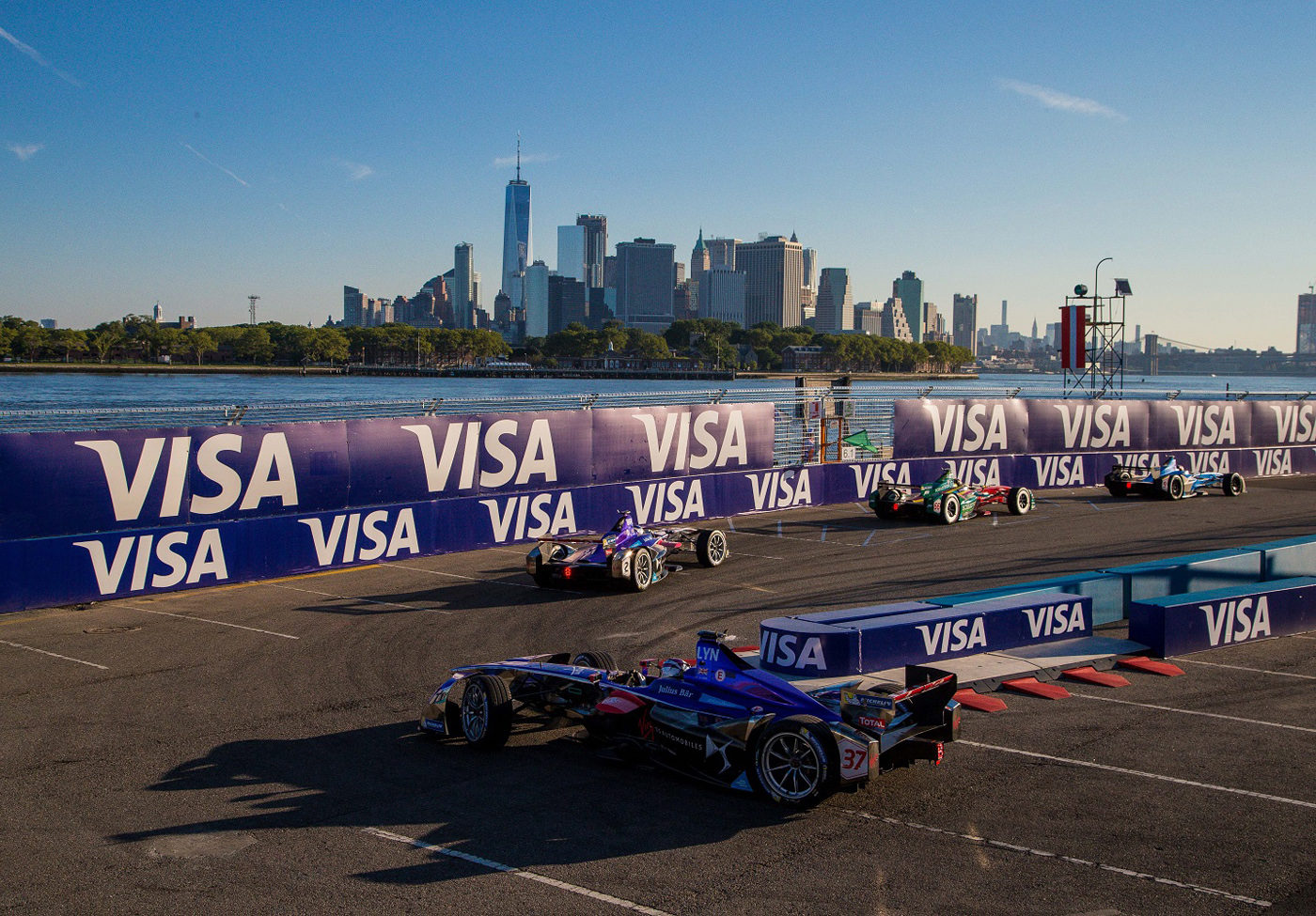July 31, 2018 10:13 pm
Wednesday, We Enter the Electrifying World of Formula E
Strap on your helmet, check your strategy one last time, and make sure your batteries are charged. On this week’s episode of Playing with Science, we continue our motorsports mini-series as hosts Gary O’Reilly and Chuck Nice investigate the electrifying world of Formula E.

DS Virgin Racing drivers Sam Bird and Alex Lynn in action during last year’s Formula E New York City E-Prix. Photo by Shivraj Gohil, courtesy of DS Virgin Racing.
Formula E, for those unfamiliar, is an auto-racing series that strictly uses electric-powered cars. Established in 2014, Formula E has been on the rise in the sporting world. Starting next season, we’ll see new cars, new batteries, and new companies entering the scene. It’s Formula 1 minus the petrol. Another key difference is that every Formula E race runs through the streets of the world’s greatest cities.
To get a view from the driver’s seat, Chuck and Gary caught up with DS Virgin Racing driver Sam Bird. Sam tells us what it’s like to operate a Formula E car and how that differentiates from his previous experience in Formula 1 and 2. You’ll hear how Formula E cars crank out an astonishing amount of engine efficiency resulting in instantaneous throttle response. Sam also tells us how he uses a simulator to help him prepare for each race and how that helps him and his team develop strategies for each circuit.
We then switch over to the production side of the sport as Chuck sits down with Paul McNamara, Technical Director at Williams Advanced Engineering – the company that makes all the batteries for Formula E. Each team uses the same batteries and they all come from Williams. You’ll learn the basic breakdown of how the battery works when implemented into the car, how much kilowatt power is being produced, and why teams must try to find advantages in the construction of their cars, given that everyone has the same amount of power.
We also explore the future of the battery. Currently, halfway through each race, the driver will switch over into a second car to continue the race. You’ll hear Paul’s thoughts on how this will change next season and how re-charging batteries during the race has the potential to create real drama, similar to when F1 cars used to do fuel pit stops. We also discuss how the technology from Formula E can translate into cars for everyday use.
Lastly, if we’re talking machines going fast, we can’t do it without our good friend adventure journalist Jim Clash. Jim weighs in on the rising popularity of Formula E and if it can continue to grow in the United States. He also sheds light through his experiences of what it’s like to go 140 mph down a city street and he updates us on his latest adventure. All that, plus, you’ll hear from all our guests this week on what they see for the future of Formula E.
Please join us tomorrow night for The Electrifying World of Formula E right here on our website, as well as on our Playing with Science channels on Apple Podcasts, Google Play Music, SoundCloud, Stitcher, and TuneIn. If you’re an All-Access subscriber, you can watch or listen to this episode ad-free.
That’s it for now. Keep Looking Up!
–Ian Mullen
Get the most out of StarTalk!
Ad-Free Audio Downloads
Ad-Free Video Episodes
Stickers & Mugs
Live Streams with Neil
Priority Cosmic Queries
Early-Access Videos
Learn the Meaning of Life
...and much more

 Become a Patron
Become a Patron

